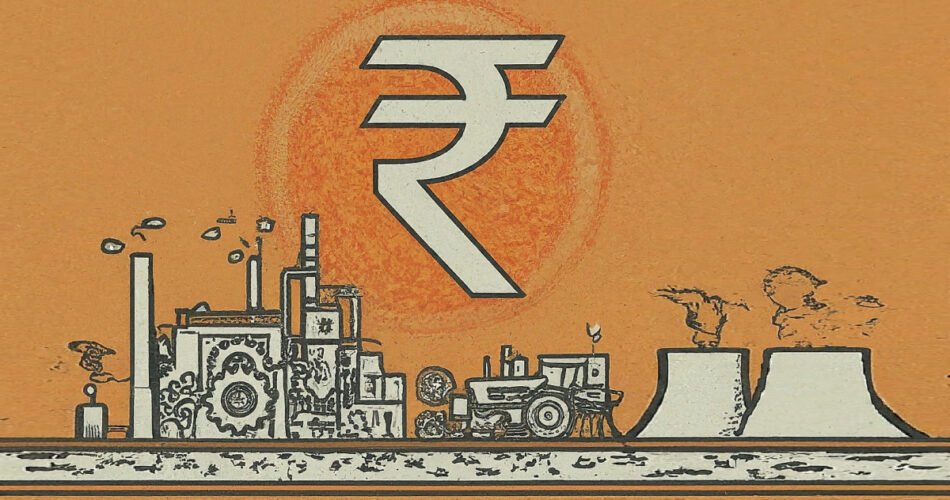Role of Industrialization in Economic Development in India
Industries play a crucial role in driving rapid economic development in India. Industrial growth is essential for boosting the overall growth rate of the Indian economy, achieved through increased production and employment opportunities. Industrial development involves expanding the number of industries, enhancing industrial production, and refining production methods. Industrialization optimally utilizes a country’s resources, both natural and artificial, leading to increased productivity compared to agriculture. Moreover, industrial advancements benefit agriculture by providing advanced production tools like machinery, tractors, and fertilizers.
Read More: Agriculture Price Policy In India: Objectives, Needs, Features, and Effects
Industrialization yields national benefits, contributing to economic growth and improved living standards. As Bayer and Yamme suggest, it’s widely recognized as the cornerstone of economic progress. With industrial development, worker productivity rises, per capita income increases, savings grow, capital formation accelerates, and employment diversifies, reducing reliance on agriculture. Jawahar Lal Nehru underscored industrialization’s importance, stating, “Industrialization is the deity worshipped by nations, a deity embodied in machinery and the optimal utilization of natural resources for maximum production and benefit.
Read More: Food Security in India – Introduction, Need & Government Initiatives
Role of Industrial Development
Industrial development significantly contributes to India’s economic progress. It helps alleviate various societal challenges such as poverty, insecurity, unemployment, and agricultural dependence. Let’s delve into its manifold impacts:
- Balanced Development: India’s economy leans heavily on agriculture, leading to imbalances. Industrial growth, coupled with service sector expansion, fosters a more balanced economy.
- Productivity Surge: Industries boost per capita productivity through division of labor, specialization, and advanced technology. This enhances productivity per worker, fostering internal and external economies.
- Agricultural Advancements: Industrial progress fuels agricultural modernization by providing essential resources like machinery and fertilizers. It also stimulates demand for agricultural products, particularly commercial crops.
- National Income Boost: Industries optimize natural resources, enhancing production and contributing to national income growth. Food processing industries add value to agricultural produce, fueling economic expansion.
- Employment Generation: Industrial development spawns new industries, creating job opportunities and reducing unemployment. Cottage to large-scale industries offer diverse employment prospects, fostering inclusive growth.
- Standard of Living Enhancement: Industries produce consumer goods, elevating living standards as people satisfy various needs. Increased income and employment further bolster purchasing power.
- Capital Formation: Industrial growth stimulates savings and investment, vital for economic development. Enhanced income and investment opportunities drive capital formation, fostering economic resilience.
- National Defense: Industrialization is crucial for national security, facilitating the production of advanced defense equipment. Domestic production reduces dependence on external sources, ensuring strategic autonomy.
- Export Promotion: Industrial development propels the export of engineering goods, chemicals, textiles, and more. In labor-abundant nations like India, export-oriented industrialization enhances global competitiveness.
- Import Substitution: Import substitution entails producing goods domestically instead of importing them, reducing reliance on foreign products. Industrial development facilitates the local manufacturing of import-substituted goods, bolstering domestic production.
- Optimal Utilization of Natural Resources: Industries harness natural resources like petroleum, minerals, and water, enhancing their efficient utilization. Machinery for resource extraction and purification is sourced from industries, promoting self-sufficiency.
- Stable Growth: Industrial development fosters economic stability by minimizing fluctuations. Unlike agriculture, which is vulnerable to natural variations, industrial production relies on human effort and government regulation, reducing volatility and ensuring consistent growth.
- Human Capital Development: Industries play a pivotal role in nurturing human capital—skills, education, health, and innovation—which are vital for national progress. Industrialization cultivates discipline, scientific acumen, punctuality, and innovation, accelerating economic development. Industrial sectors provide essential equipment for technical education and healthcare, further contributing to human capital advancement.
Read More: Agricultural Productivity: Trends, Determinants, and Strategies for Improvement
Conclusion
In contemporary times, industrial development and economic growth are often synonymous. This equivalence underscores the pivotal role of industrial progress in driving overall economic advancement. The imperative of industrial development becomes apparent, particularly in India’s current context. With a significant portion of the population below the poverty line, widespread unemployment, substantial agricultural dependency, and rapid population growth, fostering human development becomes paramount. Through industrial advancement, the nation can elevate its economic stature and achieve greater equilibrium.
FAQ on Role of Industrial Development
How does industrialization improve resource utilization in India?
Industrialization improves resource utilization in India by optimizing the extraction, processing, and utilization of natural resources such as petroleum, minerals, and water. Advanced machinery and technology sourced from industries enhance the efficiency of resource extraction and purification, leading to more effective utilization of available resources.
How does industrialization lead to increased worker productivity in India?
Industrialization in India leads to increased worker productivity through various means such as division of labor, specialization, use of machinery, and adoption of large-scale production systems. These factors enable workers to be more efficient in their tasks, resulting in higher productivity compared to traditional agricultural practices.
How does industrialization contribute to India’s economic growth?
Industrialization contributes to India’s economic growth by diversifying the economy, creating employment opportunities, increasing productivity, fostering innovation, and promoting exports. Industrial sectors drive higher value-added production, leading to overall economic expansion and improved standards of living.
What role did Jawaharlal Nehru play in promoting industrialization in India?
Jawaharlal Nehru played a pivotal role in promoting industrialization in India by prioritizing industrial development as a key component of the country’s economic strategy. He advocated for state-led industrialization through the establishment of public sector enterprises and infrastructure projects, aiming to build a self-reliant industrial base to drive economic growth and modernization.
What is the future of industrial development in India?
The future of industrial development in India looks promising, with a focus on technological innovation, sustainable practices, and global competitiveness. Efforts to enhance infrastructure, streamline regulations, and promote investments are expected to drive growth in key sectors, leading to job creation, economic diversification, and increased productivity.


[…] Read More: Role of Industrialization in Economic Development in India […]
[…] Read More: Role of Industrialization in Economic Development in India […]